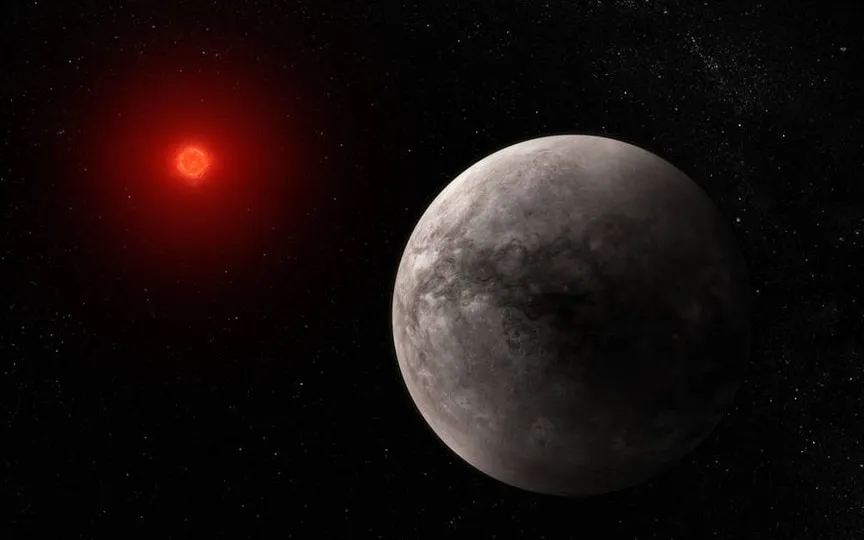James Webb Telescope Uncovers Astonishing Findings on TRAPPIST-1 c, the “Coolest Exoplanet”
In February 2017, a group of scientists utilized the Spitzer Space Telescope to uncover a significant collection of rocky exoplanets that were similar in size to Earth. Since that time, researchers have been working to examine the atmosphere of TRAPPIST-1 c by utilizing NASA’s Jammes Webb Space Telescope.
Recently, scientists managed to study the rocky exoplanet’s atmosphere and found it to be the coolest exoplanet, with a daytime temperature of about 225 degrees Fahrenheit based on thermal emissions. However, NASA scientists are uncertain about its atmosphere due to its very thin layer of carbon dioxide. They believe that if the planet has an atmosphere at all, it is very thin.
The discovery is a major advance in understanding whether planets orbiting small red dwarf stars, such as the most common star type TRAPPIST-1 c, can sustain the thick atmospheres necessary to sustain life as we know it.
“We want to know whether rocky planets have atmospheres or not,” said Sebastian Zieba, a graduate student at the Max Planck Institute for Astronomy in Germany. “Previously, we could only really study planets with thick, hydrogen-rich atmospheres. With Webb, we can finally start looking for atmospheres dominated by oxygen, nitrogen and carbon dioxide,” Sebastian Zieba added.
Based on Webb’s observation, TRAPPIST-1 c and Venus were found to be similar in size and receive the same amount of radiation from their host star as Venus receives from the Sun, so it was believed to have some atmospheric properties. of venus, but no hard evidence was found after a study with MIRI (Webb’s Mid-Infrared Instrument).
The MIRI measurement also did not provide any atmospheric information about the nature of TRAPPIST-1 c. “Our results are consistent with the planet being bare rock with no atmosphere, or the planet having a really thin CO2 atmosphere (thinner than Earth or even Mars) with no clouds,” said Zieba.
The study took a completely opposite approach, as it was previously believed that TRAPPIST-1 c is a Venus twin with a hot atmospheric planet and thick carbon dioxide. Instead, it was found to have almost no atmosphere.




